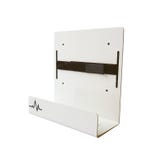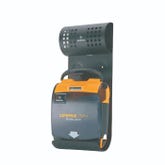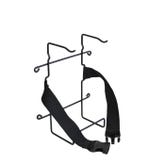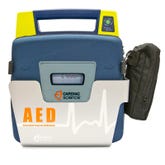Finding the Best Location for Your AED
- Nov 26, 2018

While it may be tempting to keep your equipment “out of harm’s way,” it’s far more important to make sure your AEDs are visible and are in good working order.
It’s reassuring to note that the United States holds the largest share of automatic external defibrillators (AEDs) in North America, with nearly 90% of the market, and that the AED market is predicted to grow by 6.8% (BusinessWire). Americans are increasingly aware of the dangers posed by sudden cardiac arrest (SCA) and understand that AEDs save lives.
What’s less comforting to know is that many AEDs are kept under lock and key or are tucked away in a cluttered, forgotten corner.
According to the American Red Cross, it takes an average of 8-12 minutes for first responders to arrive on the scene after 911 is called. For each minute defibrillation is delayed, the chance of survival is reduced by approximately 10%. In other words, by the time the ambulance arrives with its cargo of lifesaving EMTs and AEDs, it may already be too late.
Make Your AED Visible
Are you ready? Here’s the number one tip for effective AED placement: make it visible! It may sound obvious, but hiding your valuable AED in a corner or stowing it in an office drawer isn’t going to do anyone any good. While it may be tempting to keep your equipment “out of harm’s way,” it’s far more important to make sure your AEDs are visible and are in good working order.
Keep it Simple
When someone shouts “Where’s the AED!?” You’ll want to be able to respond with a quick, clear direction such as “In the lobby!” or “By the elevator!”
Take Stock of Your AED Inventory
Do you have enough AEDs? Most AED manufacturers recommend that facilities have at least one AED per floor. As you consider your options for the best places to put your AED, make a list of central, high-traffic areas or areas where someone is most likely to go into sudden cardiac arrest (on the office treadmill, for example). If you’re not sure where to place your AEDs, Cardio Partners offers Cardiac Preparedness Consulting Services.
Signage is Your Friend
Don’t let your aesthetic sense get in the way of common sense. Professional signage, with icons, should clearly mark AED locations and direct users to the device.
Ideally, rescuers should be able to assist the victim of an SCA in less than two minutes! AEDs and directional signs should be located in high visibility areas in public buildings and businesses and at social or athletic events.
Accessibility is Critical
AEDs should be readily accessible to all employees and to the public and should be within reach of wheelchair-bound individuals. Your AED cabinet should be mounted in an unobstructed area, 48 inches above the floor, to ensure that anyone can access it in the event of an emergency. Make sure that your employees can reach and remove the AED with one hand to minimize response time.
Be Strategic About AED Placement
Facilities managers should consider placing AEDs in areas where many people work closely together (such as assembly lines or office buildings), near confined spaces, in areas where electric-powered devices are used, and at outdoor worksites where lightning may strike (Health & Safety Institute).
Checklist: AED Placement Guidelines and Recommendations
- Make sure that your AEDs are located in a clearly marked, brightly illuminated, and unobstructed location.
- AEDs should be easy to reach and remove with one hand.
- According to the Americans with Disability Act (ADA) guidelines, the height to reach the handle of an AED should be no more than 48 inches high. The maximum side reach for an unobstructed approach to an AED is 54 inches (CPR Seattle).
- For maximum efficacy, be sure to train key personnel throughout the building in how to properly use an AED.
- Regularly inspect your equipment for signs of tampering and to make sure it’s emergency-ready. You may want to consider investing in an AED Compliance Managementprogram or a Preventative Maintenance Program.
- Consider placing non-latex protective gloves, CPR face masks, scissors, safety razors (to shave the victim’s chest hair, as necessary), absorbent towels, and a first aid kit near your AED.
To learn more about our AED training courses or to purchase an AED, call our team at 800-544-0004 or email Cardio Partners at customerservice@cardiopartners.com.











 CALL US:
CALL US: